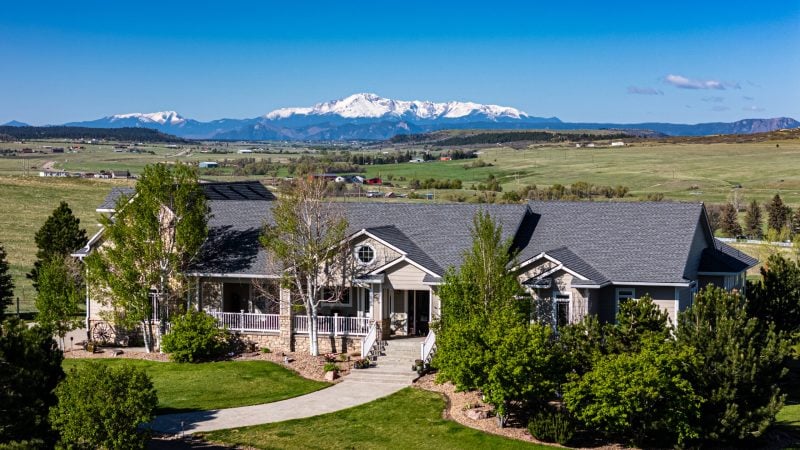The 30 Best Places to Live in Washington: Top Cities and Towns

Washington State offers residents an exceptional combination of natural beauty, economic opportunity, and diverse communities that make it one of the most desirable places to live in the United States.
From bustling metropolitan areas like Seattle and Spokane to charming smaller cities such as Anacortes and Shelton, the Evergreen State provides options for every lifestyle and budget.
This comprehensive guide examines 30 of Washington’s top cities and towns, analyzing factors like cost of living, job opportunities, schools, and quality of life to help potential residents make informed decisions about where to establish their next home.
Whether someone prioritizes urban amenities, outdoor recreation, or small-town charm, Washington’s varied geography and communities offer compelling choices across the Puget Sound region, eastern plains, and coastal areas.
Here are the 30 best places to live in Washington:
30. Shelton

Shelton sits in Mason County and was established in the 1850s as an early pioneer settlement. The city has earned the nickname “Christmas Tree Capitol” due to its prominent logging and lumber industry heritage.
With a population exceeding 9,300 residents spread across 19 square miles, Shelton offers a forest-rich landscape dotted with lakes. The natural setting provides excellent opportunities for hiking and nature walks.
Home prices in Shelton remain significantly lower than Washington’s state average of $453,663. This affordability makes it attractive for buyers seeking value in the housing market.
The city provides easy access to Washington’s major metropolitan areas while maintaining a peaceful atmosphere on Puget Sound. Residents benefit from a vibrant local culture combined with small-town charm.
Shelton’s location offers both natural beauty and practical connectivity to larger cities throughout the region.
29. Mukilteo
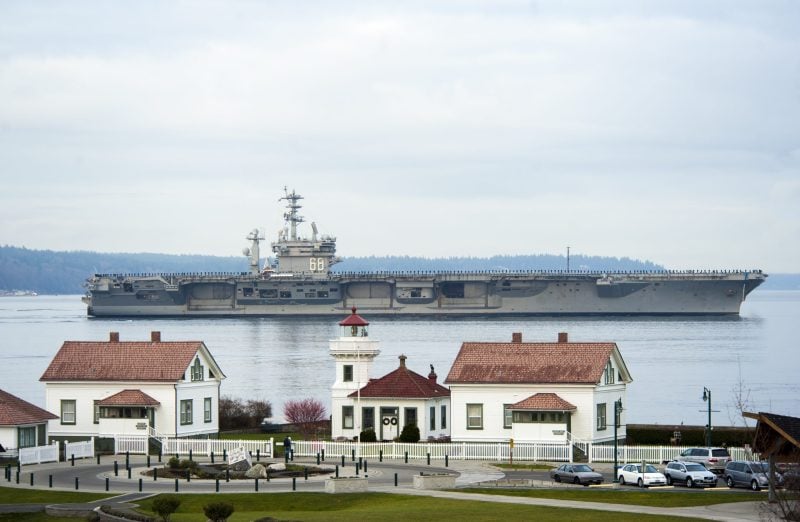
Mukilteo sits 25 miles north of Seattle on the Puget Sound in Snohomish County. The city offers residents scenic views of the Cascade Mountains, Whidbey Island, and Possession Sound.
With a population of approximately 21,400 residents, Mukilteo maintains a small-town atmosphere. The city has a poverty rate of just 5%, significantly lower than the national average.
The typical household in Mukilteo earns $102,903 annually, well above the national median income. Home prices exceed Washington’s state average of $453,663, reflecting the area’s desirability.
Mukilteo’s location provides easy access to both urban amenities and natural recreation. The city combines waterfront living with proximity to major employment centers in the Seattle metropolitan area.
28. Mountlake Terrace
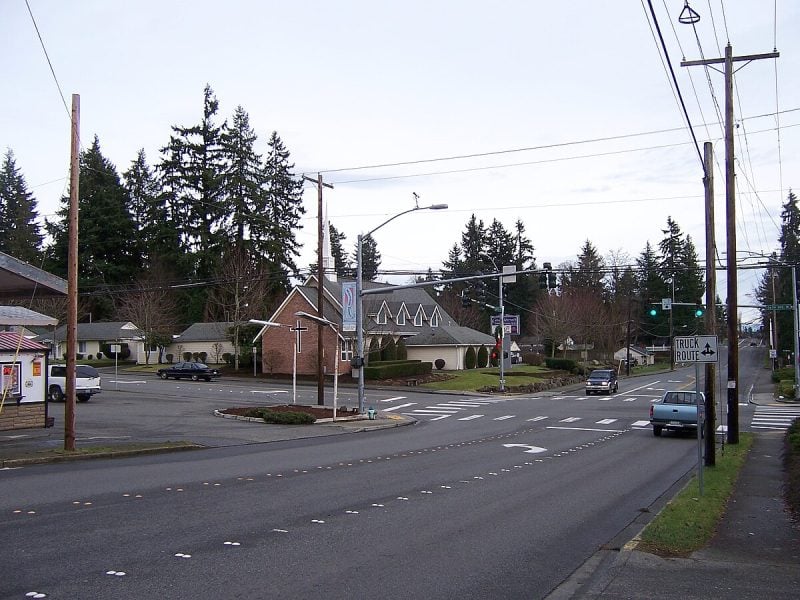
Mountlake Terrace sits 30 minutes north of Seattle, making it an ideal suburb for commuters. The city has a population of approximately 21,600 residents.
The median household income reaches $101,328, well above the national average. The poverty rate stands at 6.9%, which is 51% lower than the national average.
Housing costs reflect the area’s desirability, with median home values at $673,653. Home prices align with Washington’s state average of $453,663.
Sound Transit light rail expansion provides enhanced connectivity to Seattle. This transit improvement makes commuting more accessible for residents.
The city earned a livability score of 84 out of 100, ranking it among the top places to live nationally. It ranks 38th within Washington state for quality of life.
Mountlake Terrace attracts residents who work in Seattle but prefer suburban living. The proximity to Edmonds College also draws students and faculty to the area.
27. Mount Vernon
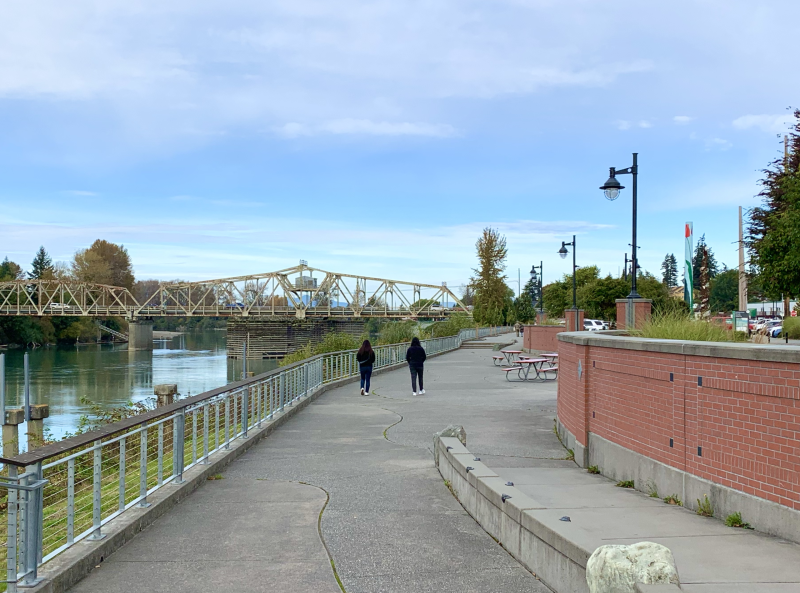
Mount Vernon sits in Skagit County with a population of 35,312 residents. The city offers a dense suburban atmosphere where most residents own their homes.
Home prices in Mount Vernon remain more affordable than Washington’s state average of $453,663. The median home price hovers around $500,000, making it accessible compared to other Washington cities.
The local economy relies on major employers including Skagit Valley College, Skagit Regional Health System, and the school district. These institutions provide stable employment opportunities for residents.
Mount Vernon features numerous coffee shops and parks throughout the community. The city attracts families and young professionals seeking a balanced lifestyle.
Residents typically hold moderate political views and enjoy the suburban environment. The cost of living stays relatively low for groceries, transportation, and healthcare compared to other Washington locations.
26. Bothell
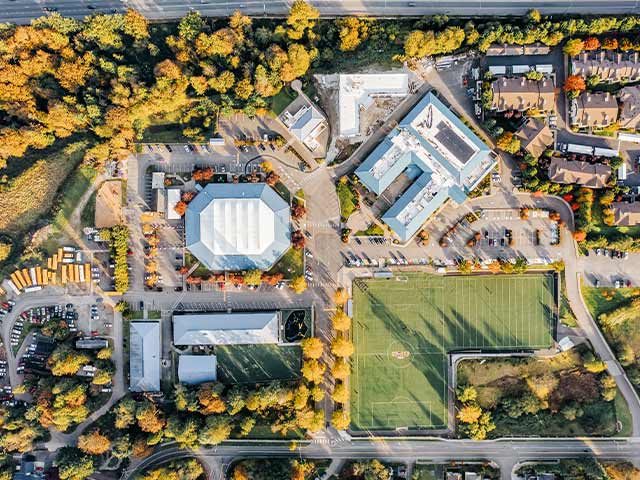
Bothell sits strategically between King and Snohomish counties, offering residents easy access to Seattle just 30 minutes away. The city maintains a quiet suburban atmosphere while providing urban conveniences.
With a population of approximately 48,000, Bothell delivers a dense suburban feel where most residents own their homes. The community enjoys low poverty rates at 4.9%, significantly below the national average.
The median household income reaches $107,651, substantially higher than the national median. This economic strength reflects the presence of numerous tech companies in the area.
Bothell features abundant restaurants, coffee shops, and parks throughout the city. The Northshore Landing waterfront area provides shopping, dining, and entertainment options for residents.
The city hosts the University of Washington Bothell and Cascadia College, adding educational opportunities to the community. These institutions contribute to the area’s vibrant academic atmosphere.
25. Federal Way

Federal Way sits in King County and offers residents a dense suburban feel with stunning views of Puget Sound. The city provides diverse neighborhoods that cater to different lifestyles and preferences.
Marine Hills stands out for its established neighborhoods and water views. Twin Lakes features homes surrounding two lakes and includes a golf course for recreation.
Dash Point attracts residents with waterfront properties and access to the state park. Redondo provides beach access along with varied housing options for different budgets.
The city contains numerous restaurants, coffee shops, and parks throughout its neighborhoods. Most residents own their homes rather than rent.
Federal Way attracts both families and young professionals seeking suburban living. The public schools perform above average compared to state standards.
Lake Dolloff offers more secluded lakeside living for those preferring quieter settings. Home prices remain below Washington’s state average, making it accessible for many buyers.
24. Lakewood
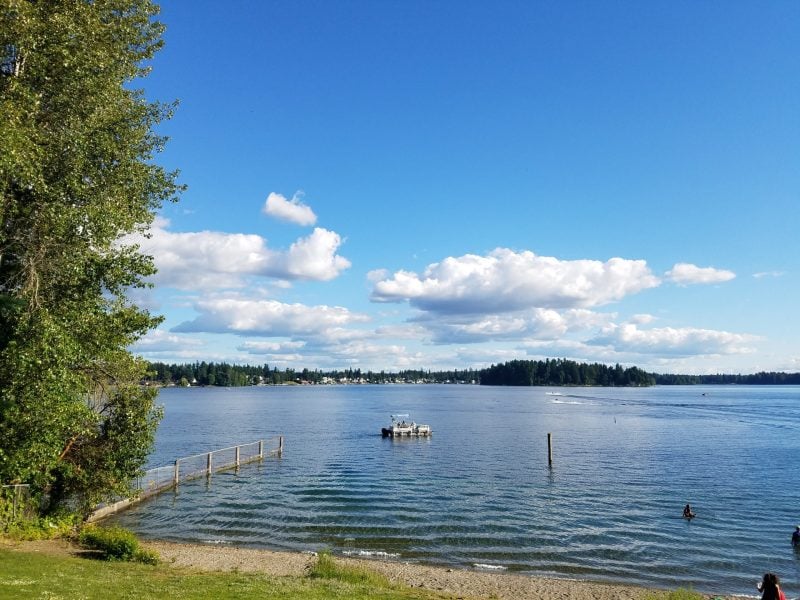
Lakewood sits in Pierce County at the northern end of Puget Sound. The city offers a blend of urban and suburban living options for its 60,564 residents.
Home prices in Lakewood remain below Washington’s state average of $453,663. This makes the area more accessible for potential homebuyers compared to other parts of the state.
The city has earned recognition for its strong economy and quality schools. Lakewood consistently receives positive ratings from various ranking organizations for livability factors.
The poverty rate stands at 14.7%, which is 5% higher than the national average. The typical household earns $55,723 annually, below the national median of $67,500.
Lakewood provides residents with access to various activities and amenities. Its location near Tacoma offers additional opportunities for work and recreation.
23. Puyallup
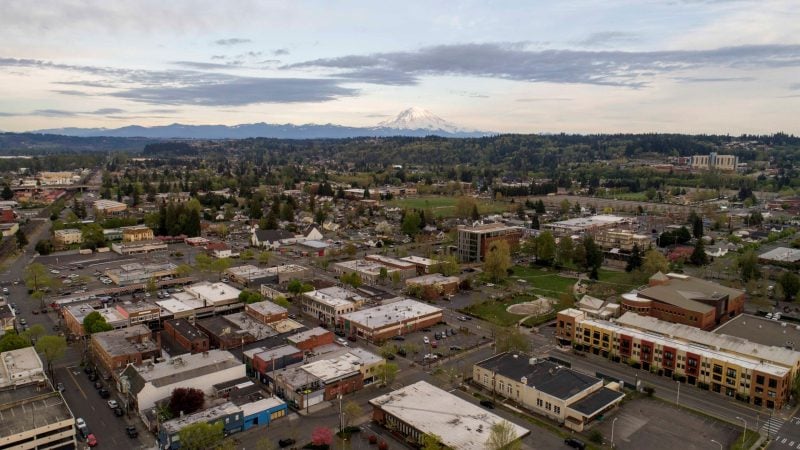
Puyallup sits on the east shore of Puget Sound in west-central Washington’s Pierce County. The city serves as part of the Seattle-Tacoma-Bellevue metro area.
The cost of living runs 25.6% higher than the national average. Home prices remain below Washington’s state average of $453,663.
August, July and September offer the most pleasant weather conditions. December and January bring the least comfortable months for residents.
The city operates in the Pacific Standard Time zone. Zip codes 98372 and 98371 serve the area.
Puyallup hosts Washington’s state fair annually. The downtown area provides cultural attractions and dining options.
Outdoor recreation opportunities exist throughout the region. The location provides access to both urban amenities and natural spaces.
22. Shoreline
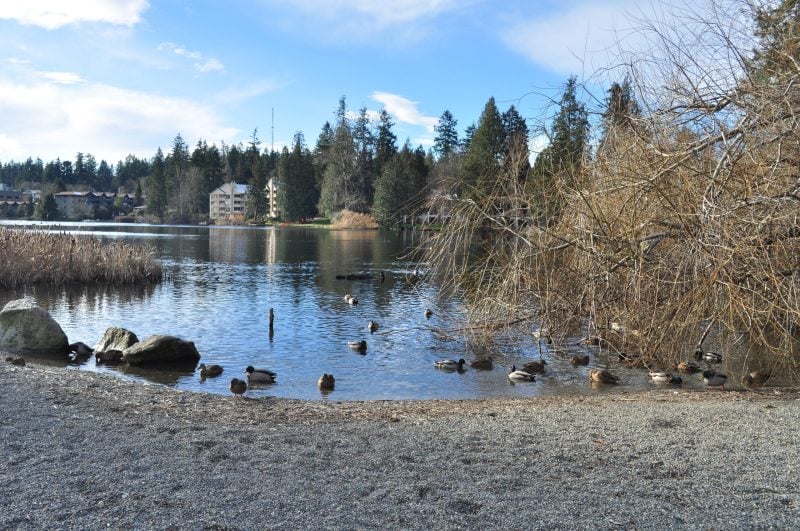
Shoreline sits just north of Seattle, offering residents easy access to the city while maintaining its own distinct character. The community provides a quieter suburban atmosphere compared to its bustling neighbor.
Housing costs in Shoreline exceed Washington’s state average of $453,663. The higher prices reflect the area’s desirability and proximity to major employment centers.
The city features well-established neighborhoods that attract families and professionals. Tree-lined streets and local parks create a residential feel throughout most areas.
Shoreline’s location provides convenient commuting options to Seattle and surrounding areas. Residents can access urban amenities while living in a more relaxed environment.
The community offers various local amenities and services. Parks, schools, and shopping areas serve the daily needs of residents without requiring trips to larger cities.
21. Kennewick
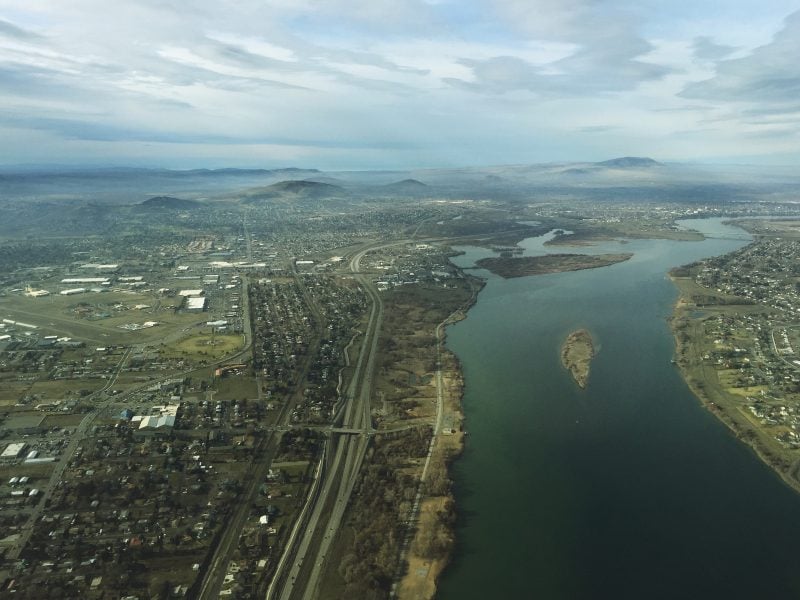
Kennewick consistently ranks among Washington’s top places to live, earning recognition in multiple 2025 livability rankings. The city offers affordable housing costs that remain well below the state average of $453,663.
Families appreciate Kennewick’s top-rated schools and family-friendly environment. The community provides a mix of neighborhoods, from revitalized downtown areas to newer developments like Creekstone.
The Tri-Cities region experiences a desert climate with hot summers and cold winters. Residents should prepare for temperature extremes throughout the year.
Kennewick’s cost of living stays relatively affordable compared to other Washington cities. This affordability attracts new residents seeking quality amenities without premium prices.
The city balances historic charm with modern amenities. Downtown Kennewick undergoes ongoing revitalization while maintaining its character and appeal.
20. Richland

Richland sits in southeastern Washington with a population of approximately 62,000 residents. The city consistently ranks well for cost of living, education quality, and low crime rates.
Home prices in Richland remain below Washington’s state average of $453,663. Most residents own their homes in this dense suburban community.
The city offers distinct neighborhoods for different preferences. North Richland attracts professionals working near Pacific Northwest National Laboratory. South Richland features established areas with mid-century homes.
West Richland provides newer developments with a more rural atmosphere. Central Richland serves as the historic downtown core with mixed housing options.
Richland maintains excellent schools and family-friendly neighborhoods. The city features numerous coffee shops and parks throughout its boundaries.
The Horn Rapids area stands out as a master-planned community. Richland’s location makes it part of the broader Tri-Cities region in southeastern Washington.
19. Pasco
Pasco ranks as one of Washington’s most diverse communities, placing 30th out of 181 most diverse suburbs statewide. The city has experienced rapid growth in recent years and earned an A+ ranking from BestPlaces based on weather, cost of living, and housing affordability.
Home prices in Pasco remain significantly lower than Washington’s state average of $453,663. This affordability makes it attractive for families and young professionals seeking value.
The Riverview neighborhood offers scenic waterfront properties with quality schools nearby. Road 68 Corridor provides family-friendly housing with convenient shopping access.
Clark Addition features affordable homes close to downtown Pasco. The Burden Boulevard Area sits centrally located near parks and local amenities.
Pasco’s location in Franklin County positions residents within the growing Tri-Cities region. The community ranks 107th out of 181 best suburbs for young professionals in Washington state.
18. Anacortes
Anacortes sits on Fidalgo Island in northwestern Washington, home to approximately 16,500 residents. The city serves as a gateway to the San Juan Islands and offers stunning waterfront views.
The community combines small-town charm with natural beauty. Residents enjoy easy access to outdoor recreation and maritime activities.
Anacortes has earned a livability score that ranks it among Washington’s more desirable places to live. The city attracts families, young professionals, and retirees seeking a quieter lifestyle.
Housing costs in Anacortes exceed the state average of $453,663. The higher prices reflect the area’s desirability and scenic location.
The city features excellent schools and a charming downtown area. Skagit County’s location provides both natural amenities and reasonable proximity to larger urban centers.
17. Sammamish
Sammamish stands out as one of Washington’s premier places to live. This Seattle suburb houses 66,375 residents in King County.
The city earned recognition as the nation’s best small city to live in for 2025. It also secured a spot in the top 25 best places to live nationwide.
Sammamish offers residents a sparse suburban atmosphere. Most residents own their homes rather than rent.
The community features numerous coffee shops and parks throughout the area. Outdoor enthusiasts benefit from excellent access to recreational facilities.
Home prices in Sammamish exceed the state average of $453,663. The higher costs reflect the desirable nature of local neighborhoods.
The city provides strong educational opportunities and family-friendly amenities. Safety remains a priority for local government and residents.
16. Portland Heights
Portland Heights sits in the southwest hills of Portland, Oregon, offering residents stunning views of the city and Mount Hood. The neighborhood features tree-lined streets with well-maintained homes dating from the early 1900s to modern construction.
This area attracts professionals and families seeking a quiet residential environment close to downtown Portland. The neighborhood maintains a low crime rate compared to other parts of the city.
Portland Heights provides easy access to Washington Park, which houses the Oregon Zoo, Japanese Garden, and Rose Garden. Residents can reach downtown Portland within 15 minutes by car.
The housing market includes both historic homes and newer constructions. Property values remain stable due to the desirable location and limited inventory.
Local amenities include nearby shopping on Northwest 23rd Avenue and easy access to hiking trails in Forest Park.
15. Yakima
Yakima sits in south-central Washington’s scenic valley, offering residents affordable living with city amenities. The median home price of $341,000 makes it significantly cheaper than the state average.
Living costs run about 15% lower than Washington’s average. This creates substantial savings for families and individuals seeking quality of life without high expenses.
The city provides solid infrastructure including hospitals, colleges, and restaurants. Yakima’s location puts it 145 miles southeast of Seattle and 190 miles northeast of Portland.
Cultural attractions include a symphony, theaters, and museums. The area hosts numerous annual festivals throughout the year.
The Yakima Valley is renowned for its wine industry and outdoor recreation opportunities. Historic neighborhoods like Yakima Avenue Historic District offer walkable communities with character homes.
14. Everett
Everett stands out as one of Washington’s most livable cities with strong economic foundations. The city maintains a robust job market with unemployment at just 3%.
Boeing’s massive assembly plant anchors the local economy. This facility ranks as the largest building in the world by volume, providing substantial employment opportunities.
The city enjoys moderate weather year-round with average temperatures of 54 degrees. Annual rainfall reaches 46 inches, typical for the Pacific Northwest region.
Housing costs remain reasonable compared to other Washington cities. Home prices fall below the state average of $453,663, making homeownership more accessible.
Everett’s waterfront location offers numerous recreational activities. Residents can access boating, fishing, and scenic walking trails along the coast.
The city combines industrial strength with natural beauty, creating a balanced living environment for families and professionals.
13. Lacey
Lacey ranks as the second-best place to live in Washington State according to Money magazine. The city earned recognition from U.S. News & World Report as the sixth-best place to live statewide.
The diverse community consists of 43% white residents, 19% Hispanic or Latino, 16% Asian, and 15% African American or Black populations. This demographic mix contributes to Lacey’s appeal as a residential destination.
Hawks Prairie offers newer homes and modern shopping centers for residents seeking contemporary amenities. The Meridian Campus provides a planned community with various housing options and abundant green spaces.
Two local colleges, St. Martin’s University and South Puget Sound Community College, bring youthful energy to the area. Home prices remain below the Washington state average of $453,663, making Lacey more affordable than many comparable communities.
The city’s location near Mount Rainier and southern Puget Sound provides access to outdoor recreation opportunities.
12. Edmonds
Edmonds sits north of Seattle in Snohomish County with a population of 42,783 residents. This suburban community offers an urban-suburban mix that attracts both young professionals and retirees.
The city features a walkable downtown area with shops, restaurants, and waterfront access along Puget Sound. Residents enjoy mild year-round temperatures and access to outdoor activities like hiking and boating.
Edmonds maintains low poverty rates at 4.9%, well below the national average. The typical household earns $91,499 annually, significantly higher than the national median of $67,500.
Several neighborhoods offer distinct characteristics. The Edmonds Bowl provides hillside living with Sound views, while Seaview offers quiet residential streets with varied housing styles.
Most residents own their homes in this well-regarded Washington community. The area provides convenient access to parks, coffee shops, and dining establishments throughout the city.
11. Issaquah
Issaquah stands out as one of Washington’s premier suburban communities. Located in King County just east of Seattle and Bellevue, this city offers an ideal blend of urban convenience and natural beauty.
The city consistently earns recognition in national rankings for livability. Issaquah has been named the most affordable place to live in Washington and ranks fourth on CNN BestPlaces’ best places to live list.
With a population of approximately 39,500, Issaquah maintains a strong sense of community. The typical household earns $122,053 annually, well above the national median.
Residents enjoy an urban-suburban mix with abundant restaurants, coffee shops, and parks. The Cascade Mountains provide a stunning eastern backdrop while Seattle’s employment opportunities remain easily accessible.
The poverty rate of 7.2% sits significantly below the national average. Most residents are homeowners, creating stable neighborhoods that attract families and young professionals seeking quality of life near major metropolitan areas.
10. Renton
Renton sits in King County with a population of 105,279 residents. The city offers an urban suburban mix that appeals to families and young professionals.
Most residents own their homes in this community. The area features numerous restaurants, coffee shops, and parks for daily amenities.
Kennydale provides lakefront living with Lake Washington views. Fairwood offers a planned community with golf courses and green spaces.
The Landing serves as a modern urban village with shops, restaurants, and apartments. East Renton Highlands maintains a rural atmosphere with larger lots.
Public schools in Renton perform above average standards. The city provides access to outdoor activities like Gene Coulon Memorial Beach Park and Lake Wilderness Arboretum.
Renton’s location in King County connects residents to the broader Seattle metropolitan area while maintaining its own distinct character.
9. Olympia
Olympia serves as Washington’s capital city and sits at the southern tip of Puget Sound. The city has earned recognition as one of the top places to live in the western United States.
Home prices in Olympia remain below the state average of $453,663. This makes the area more affordable compared to other major Washington cities.
The capital offers diverse neighborhoods to suit different lifestyles. East Olympia provides a rural feel with larger lots near Watershed Park. The South Capitol neighborhood features historic homes within walking distance of the State Capitol.
Residents enjoy abundant outdoor recreation opportunities including hiking trails, lakes, and beaches. The nearby Tumwater Falls Park adds to the area’s natural attractions.
Olympia combines government employment stability with a vibrant local culture. The city attracts those seeking natural beauty alongside urban amenities.
8. Kirkland
Kirkland stands as one of Washington’s premier residential destinations. This Seattle suburb houses 91,614 residents in King County along Lake Washington’s eastern shore.
Money Magazine ranked Kirkland third on its 2022 list of America’s 50 Best Places to Live. The city earned recognition for economic activity, quality of life, and diversity.
Residents enjoy an urban-suburban lifestyle with extensive dining and coffee shop options. The city offers abundant parks and recreational facilities throughout its neighborhoods.
Finn Hill attracts nature enthusiasts with its proximity to St. Edward’s State Park and direct Lake Washington access. Families and young professionals make up the majority of Kirkland’s population.
Home prices exceed Washington’s state average of $453,663. Most residents own their homes rather than rent.
The location provides easy access to Seattle while maintaining a distinct community identity. Kirkland’s economy benefits from its position in the greater Seattle metropolitan area.
7. Vancouver
Vancouver ranks as the fourth-largest city in Washington state with over 192,000 residents. The city earned recognition on Livability.com’s 2025 Top 100 Best Places to Live list.
Located across the Columbia River from Portland, Vancouver offers unique tax advantages. Residents benefit from no Washington state income tax while accessing Oregon’s sales tax-free shopping.
The median home price sits at approximately $628,000, providing more affordability than Seattle. Vancouver features excellent family neighborhoods and quality school districts.
The city provides strong job opportunities and maintains good connectivity to major metropolitan areas. Vancouver’s location allows easy access to both urban amenities and outdoor recreation.
Multiple neighborhoods cater to different lifestyles, from young professionals to families and retirees. The community offers a balance of small-town feel with big-city conveniences nearby.
6. Tacoma
Tacoma stands as Washington’s second-largest city, positioned strategically on Puget Sound with Seattle visible across the water. The city offers urban sophistication while maintaining access to the Pacific Northwest’s natural beauty.
Housing costs in Tacoma remain notably more affordable than Seattle, making it attractive for families and young professionals. The waterfront location provides stunning views throughout many neighborhoods.
Point Defiance Park serves as a major attraction, offering 760 acres of old-growth forest, beaches, and recreational facilities. The area provides excellent outdoor access for hiking, kayaking, and wildlife viewing.
Tacoma’s job market continues to strengthen across multiple sectors. The city benefits from its proximity to major employers in the greater Seattle metropolitan area while developing its own economic base.
The North End features some of Tacoma’s most desirable neighborhoods, including the historic North Slope district. Downtown Tacoma has experienced significant revitalization with new restaurants, cultural venues, and residential developments.
5. Bellingham
Bellingham combines small-town charm with urban amenities in Washington’s northwest corner. The city sits near the Canadian border and offers easy access to both Seattle and Vancouver.
With a population of approximately 92,000 residents, Bellingham maintains a manageable size while providing diverse neighborhoods. The median home price reaches $628,288, which remains lower than Seattle’s market rates.
The city attracts young professionals and students due to Western Washington University’s presence. Residents enjoy numerous bars, restaurants, coffee shops, and parks throughout the area.
Bellingham’s location provides quick access to outdoor recreation and major metropolitan areas. The typical household earns $56,198 annually, though the poverty rate sits at 20%.
Popular neighborhoods include historic Fairhaven with Victorian architecture, South Hill offering bay views, and Sehome Hill near the university campus. Most residents rent their homes rather than own.
4. Redmond
Redmond sits 15 miles east of Seattle in King County. The city serves as headquarters for Microsoft Corporation and Nintendo of America.
This tech hub consistently ranks among Washington’s top places to live. Multiple ranking systems recognize Redmond as the best suburb in the state.
The city offers low crime rates and high per capita income levels. Residents benefit from excellent quality of life compared to other Washington cities.
Housing costs exceed the state average of $453,663. The premium reflects strong demand for this desirable location.
Redmond provides diverse cultural attractions and regular community events. The city features parks, museums, restaurants, and shopping centers throughout its neighborhoods.
Its proximity to Seattle creates convenient access to urban amenities. The location balances suburban living with metropolitan opportunities.
3. Spokane
Spokane ranks as Washington’s second-largest city with approximately 223,000 residents. The city sits at 1,843 feet above sea level in eastern Washington, positioned along the Spokane River near the Selkirk Mountains.
The metropolitan area encompasses 29 cities and towns, housing around 735,000 people total. This expansive region spans Spokane County in Washington and extends into neighboring Idaho.
Spokane offers significantly lower housing costs compared to western Washington. Home prices average below the state median of $453,663, making homeownership more accessible than in Seattle or other coastal cities.
The city serves as the economic hub of eastern Washington. Major employers span healthcare, education, and manufacturing sectors, providing diverse job opportunities for residents.
Outdoor recreation thrives with Riverside State Park offering hiking, biking, and camping. The North Bank Trail follows the Spokane River, while the Northwest Museum of Arts & Culture provides cultural attractions downtown.
2. Bellevue
Bellevue stands as one of Washington’s premier destinations for residents seeking quality and opportunity. This affluent city sits just east of Seattle, offering easy access to major employment centers while maintaining its own distinct character.
The city consistently ranks among the top places to live nationwide. Recent rankings placed Bellevue 10th best in the United States, recognizing its transformation from suburban area to thriving city.
Bellevue’s job market attracts professionals from various industries. The presence of major technology companies creates abundant employment opportunities for skilled workers.
Educational excellence defines the community through highly rated public schools. Families choose Bellevue specifically for these academic advantages and learning environments.
The city balances urban amenities with suburban comfort. Residents enjoy access to shopping, dining, and cultural activities without sacrificing neighborhood quality or safety standards.
1. Seattle
Seattle stands as Washington’s largest city with a population of 733,919 residents. The city offers a distinctive blend of urban amenities and Pacific Northwest culture.
The median home price reaches $831,738, reflecting the city’s desirability and economic strength. Seattle serves as headquarters for major corporations including Starbucks, Boeing, and Microsoft.
Residents enjoy access to renowned coffee culture and diverse neighborhoods like Capitol Hill. The city’s signature skyline and waterfront location provide scenic urban living.
Seattle’s average resident age of 35.2 years indicates a dynamic, younger population. The city offers extensive cultural amenities, restaurants, and recreational opportunities.
Transportation options include public transit systems connecting various neighborhoods and surrounding areas. Seattle’s tech industry presence creates abundant employment opportunities for professionals in multiple sectors.
What Makes Washington State a Great Place to Live
Washington State combines stunning natural landscapes with robust economic opportunities and rich cultural diversity. The state offers residents access to mountains, coastlines, and forests alongside thriving tech industries and vibrant urban communities.
Natural Beauty and Outdoor Recreation
Washington State provides residents with access to diverse natural environments within short distances. The Cascade Mountains offer year-round skiing at destinations like Crystal Mountain and Stevens Pass. Mount Rainier National Park sits just two hours from Seattle.
The Olympic Peninsula features temperate rainforests and rugged coastlines. Puget Sound provides opportunities for sailing, kayaking, and whale watching. San Juan Islands offer ferry access to secluded beaches and hiking trails.
Key Outdoor Activities:
- Hiking on over 3,000 miles of trails
- Skiing at 15+ ski resorts
- Water sports on lakes and coastal waters
- Rock climbing in the North Cascades
The state receives significant rainfall in western regions, creating lush green landscapes. Eastern Washington offers drier climates with wine country and desert terrain. This geographic diversity allows residents to experience multiple climates without leaving the state.
Economic Opportunities
Washington State hosts major technology companies including Microsoft, Amazon, and Boeing. Seattle serves as a hub for software development and e-commerce innovation. The state’s economy extends beyond tech into aerospace, agriculture, and maritime industries.
The minimum wage reaches $16.28 per hour as of 2025. Washington imposes no state income tax, allowing residents to keep more of their earnings. Sales tax varies by location but averages around 9%.
Major Employment Sectors:
- Technology and software
- Aerospace manufacturing
- Healthcare services
- International trade
Unemployment rates typically remain below national averages. The Port of Seattle handles significant international cargo, supporting logistics and trade jobs. Agricultural exports include apples, wheat, and wine.
Cultural Diversity
Washington State’s population includes significant Asian American, Hispanic, and Pacific Islander communities. Seattle’s International District represents one of the oldest Asian American neighborhoods on the West Coast. Tacoma and Spokane also maintain diverse populations.
The state hosts numerous cultural festivals throughout the year. Seattle International Film Festival attracts global audiences. Seafair celebrates maritime heritage with hydroplane races and air shows.
Cultural Highlights:
- Multiple languages spoken in schools
- International cuisine options
- Art museums and galleries
- Music venues for all genres
Universities like the University of Washington attract international students and faculty. This academic presence contributes to the state’s multicultural atmosphere. Native American tribes maintain active cultural centers and host traditional events.
Factors to Consider When Choosing Where to Live in Washington
Living costs vary dramatically across Washington, from affordable eastern cities to expensive western metros. The state’s climate ranges from wet coastal regions to dry eastern areas, while school districts show significant quality differences between districts.
Cost of Living
Housing costs represent the largest expense difference across Washington cities. Seattle and Bellevue median home prices exceed $800,000, while Spokane and Yakima offer homes under $400,000.
Rental markets follow similar patterns. Seattle one-bedroom apartments average $1,800-2,200 monthly, compared to $800-1,200 in eastern Washington cities like Richland or Wenatchee.
Utilities and transportation costs fluctuate by region. Western Washington residents pay higher electricity rates but benefit from extensive public transit systems. Eastern areas have lower utility costs but require personal vehicles for most transportation needs.
State taxes impact everyone equally since Washington has no state income tax. However, sales tax rates vary by city, ranging from 7% to 10.4% depending on local additions.
Climate and Weather
Western Washington experiences a marine climate with wet winters and dry summers. Seattle receives 38 inches of annual rainfall, mostly between October and April. Temperatures rarely drop below freezing or exceed 80°F.
Eastern Washington has a continental climate with hot, dry summers and cold winters. Spokane averages 17 inches of rainfall annually with summer temperatures reaching 85-90°F and winter lows near 25°F.
Mountain regions create microclimates throughout the state. Areas near the Cascades receive heavy snowfall, while the Olympic Peninsula’s western slopes see over 100 inches of annual precipitation.
School Quality
Top-performing districts include Mercer Island, Bellevue, and Issaquah in King County. These districts consistently rank among Washington’s best with test scores above state averages and high graduation rates.
Rural districts often struggle with funding limitations but maintain smaller class sizes. Districts like Cle Elum-Roslyn and Cashmere provide personalized attention despite fewer advanced placement offerings.
Urban districts like Seattle and Tacoma offer diverse programs including STEM academies and arts magnet schools. However, performance varies significantly between individual schools within these large districts.
Private and charter options remain limited compared to other states, making public school quality a crucial factor for families choosing residential locations.





